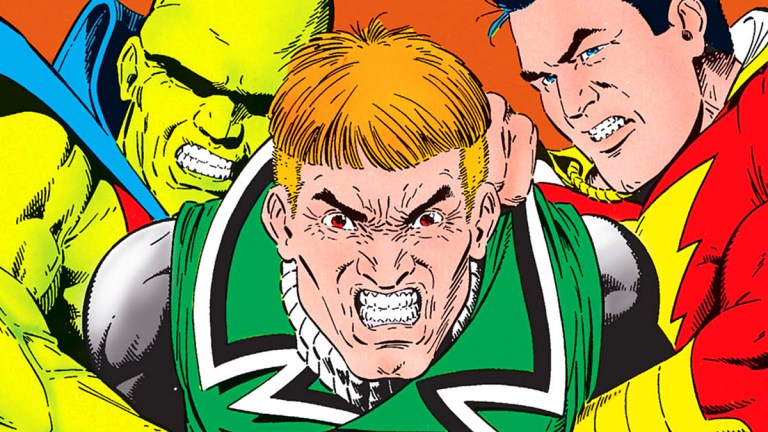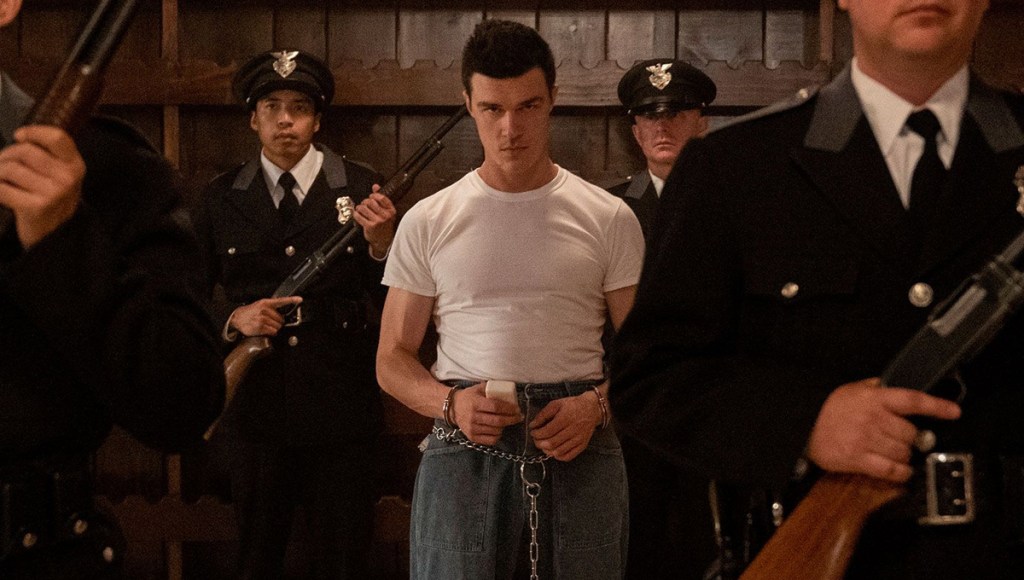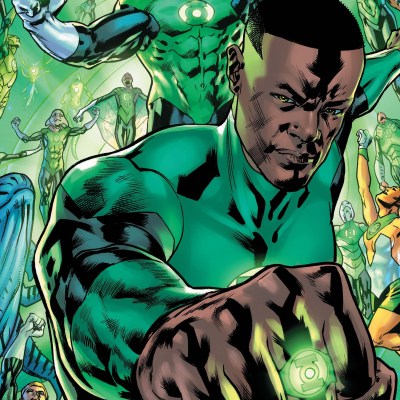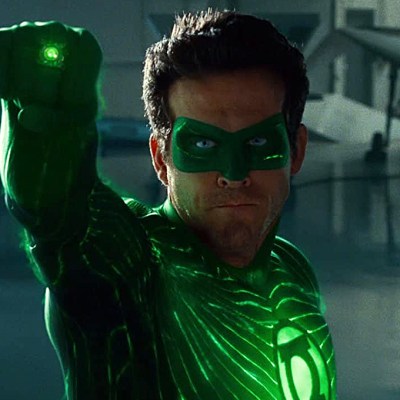Green Lantern: What Guy Gardner Means for the HBO Series
Finn Wittrock’s role as Guy Gardner on HBO’s Green Lantern series is the antihero’s first live-action rendition since 1997’s failed Justice League of America TV pilot.

When HBO Max announced its Green Lantern live-action television series, speculation ran rampant on how the DC galactic superhero mantle would be handled after Ryan Reynolds starred in the notorious 2011 film flop. However, that speculation has just narrowed, with the casting of headliner Finn Wittrock. The catch? Rather than playing famous hero Hal Jordan, Wittrock will instead star as machismo-addled antihero Guy Gardner, who will eventually be joined by other ring-wielders from the comic lore. It’s an intriguing development that will undoubtedly define the tone of the series.
Who is Guy Gardner? While that might sound like an easy question to longtime DC Comics readers, initiate fans only familiar with Green Lantern’s film and television iterations are likely unaware of the powder keg of un-PC repartee that the classic character’s live-action arrival prospectively wields for the eventually assembled onscreen ensemble. In fact, Gardner is so prominent that Warner Bros. Television’s notorious 1997 Justice League of America live-action television pilot used him as the titular team’s version of Green Lantern. However, it was essentially an adaptation nod in name only, since this version of Gardner, played by Matthew Settle, was hardly the impetuous loudmouth that fans knew and loved, and was instead a generic amalgam of Green Lantern tropes, and didn’t even retain his signature, Moe Howard-esque bowl cut; a mistake that hopefully won’t be repeated.
Consequently, the casting of Finn Wittrock, reported by Variety, will serve as the first onscreen version of Guy Gardner’s Green Lantern since that campy debacle. In reality, though, he will be the first proper live-action version, since said JLA pilot was essentially disposed of with a single CBS Sunday night airing on Dec. 28, 1997, and simply used Gardner’s name as a shell, possibly to leave an opening for Hal Jordan to turn up in the various unrealized superhero fare that Warner Bros. Pictures had on tap (which, ironically enough, might be the reason he’s being used now). Yet, the role could become a natural fit for 36-year-old American actor Wittrock (pictured below), who, as of late, has been making a habit of playing volatile characters, coming off a prominent role as institutionalized murderer Edmund Tolleson on Netflix series Ratched and—possibly by some cosmic coincidence—will play a character named Harry Gardener on the upcoming anthology iteration of FX’s American Horror Story. Wittrock’s Guy Gardner will operate under the creative auspices of writer/showrunner Seth Grahame-Smith.

Guy Gardner is the ultimate manifestation of masculinity and jingoism, one who operates with an actions-speak-louder-than-words ethos, all turned up to eleven. Moreover, he’s known to be a domineering member of heroic teams such as the Justice League who—more often than not—ends up clashing with his teammates as much as any supervillains. Interestingly, the character’s conception—by writer John Broome and artist Gil Kane—in the March 1968-stamped Green Lantern Vol. 2 #59 was designed as a retcon twist to Hal Jordan’s origin story. While Jordan famously inherited the Green Lantern ring from mortally-wounded alien Abin Sur, it would later be revealed that Hal was one of two Earthlings selected as potential successors—with Gardner being the other—and only earned the mantle due to his closer proximity to the dying Lantern. Gardner’s more covetous side took hold after he was relegated to being a back-up Lantern, but the ring’s ability to assess a person’s innate potential indicated that a true hero resided beneath his rough-around-the-edges exterior.
While Gardner was initially depicted as aggressive and ambitious, the notoriety that eventually made him a comic book icon wasn’t quite there yet during his early appearances. Indeed, the bombastic personality that comic fans would come to embrace (ironically or not,) was an organic accident of sorts. Having been left in a coma for several years—after the combination of a bus accident, a ring battery malfunction and torture in the Phantom Zone—the character was revived by the Controllers during 1985’s Crisis on Infinite Earths storyline. Yet, the newer, louder facets of Gardner’s personality came from Green Lantern artist Steve Englehart and artist Joe Staton, who dovetailed him with the idea of a figure who parodied the hyper-masculine action movie heroes of the time. Yet, the whole “organic accident” part of this rebirth resided in the fact that Gardner was so drastically different from Broome and Kane’s original iteration that he may as well had been a completely different character altogether, which would have instead yielded Englehart and Staton credit and royalties as the creators; a move they both regret to this day.
Gardner would gain significant prominence as the founding member of an all-new version of DC’s Justice League in 1987, in a run written by Keith Giffen and J.M. DeMatteis. There, his legend as a quixotic antihero was solidified in the team’s formation, during which his consistent badgering of Batman culminates in the Dark Knight knocking him out cold with a single punch. Yet, Gardner’s abusively traumatic childhood, along with a touch of dissociative identity disorder caused by his coma, was used to explain his often-bellicose nature. These character layers helped him emerge as an affectionately-damaged fan-favorite alternative Green Lantern. It was a stride that was hit during a most accommodating era for such a personality, the late-1980s and early-1990s, when the concept of antiheroes was starting to have a prominent place in the comic book world; an era during which seemingly irredeemable villains were being positioned as protagonists in their own standalone titles. While Gardner did field a failed reinvention—fully-clad in black leather—in which he briefly called himself “Warrior,” he remains an A-lister in the DC Universe.
Regardless, Guy Gardner has frequently flown close to the edge of evilness, notably during a storyline in which possession of Sinestro’s yellow Qwardian Power Ring channeled malevolent, fear-based powers, but don’t expect a villain arc from Wittrock’s rendition on HBO Max’s Green Lantern. Rather, like in the comics, expect a brash-yet-bold source of tension in a team dynamic. With this version of Gardner said to come from an era-appropriate 1984, the plot will cross time itself to include a 1941 version of Golden Age Green Lantern Alan Scott (said to be depicted as a closeted FBI agent,) and half-alien Bree Jarta. Indeed, Gardner ultimately answers the clarion call of the Corps when the universe—as it often does—becomes besieged by some kind of existential threat.

